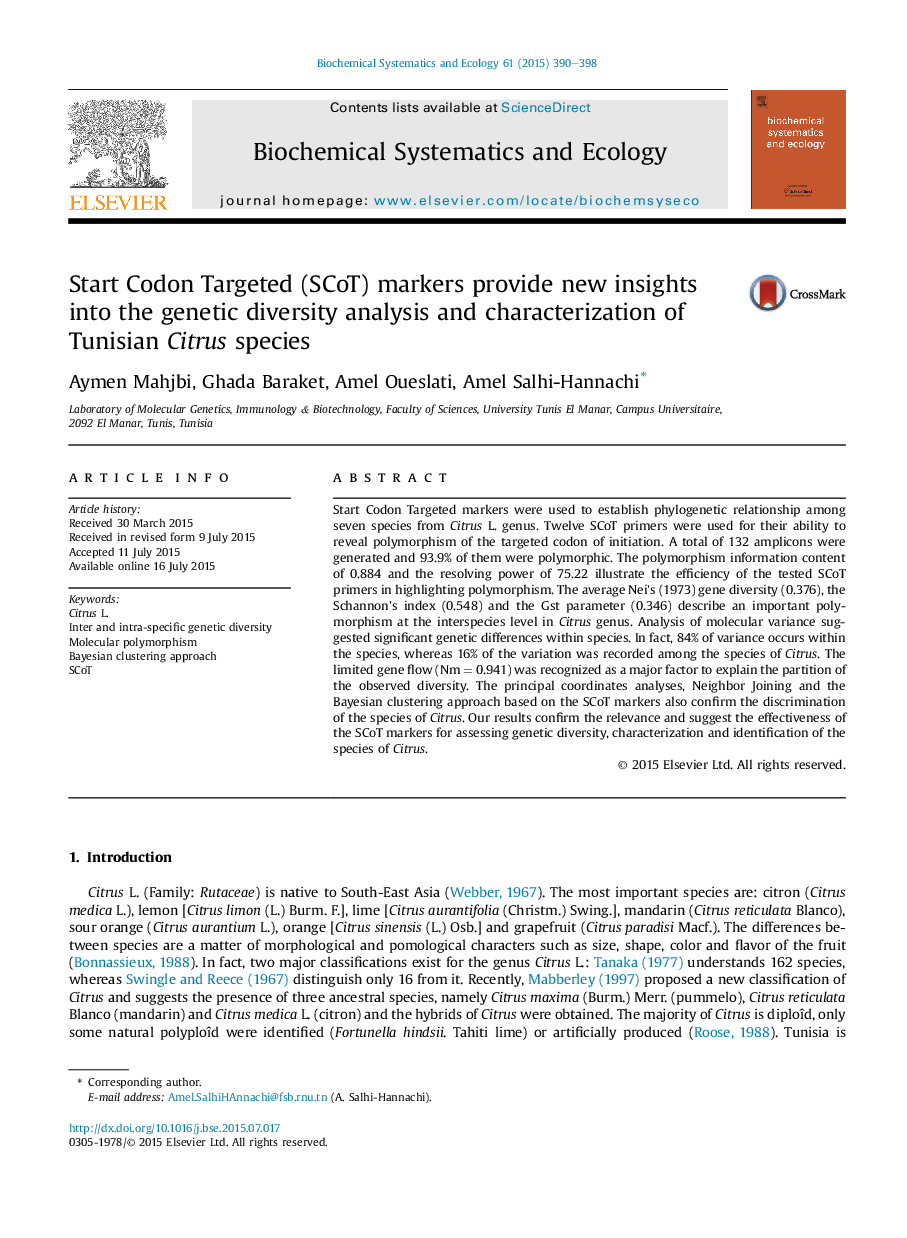| Article ID | Journal | Published Year | Pages | File Type |
|---|---|---|---|---|
| 1354228 | Biochemical Systematics and Ecology | 2015 | 9 Pages |
•124 SCoT markers were used to analyze the genetic diversity of Citrus L. species.•An important polymorphism occurs at the intra and inter specific levels.•Molecular polymorphism occurs independently from the geographical origin of species.•A limited gene flow explains the distribution of the observed diversity.•The Citrus genetic structure was defined within three gene pools.
Start Codon Targeted markers were used to establish phylogenetic relationship among seven species from Citrus L. genus. Twelve SCoT primers were used for their ability to reveal polymorphism of the targeted codon of initiation. A total of 132 amplicons were generated and 93.9% of them were polymorphic. The polymorphism information content of 0.884 and the resolving power of 75.22 illustrate the efficiency of the tested SCoT primers in highlighting polymorphism. The average Nei's (1973) gene diversity (0.376), the Schannon's index (0.548) and the Gst parameter (0.346) describe an important polymorphism at the interspecies level in Citrus genus. Analysis of molecular variance suggested significant genetic differences within species. In fact, 84% of variance occurs within the species, whereas 16% of the variation was recorded among the species of Citrus. The limited gene flow (Nm = 0.941) was recognized as a major factor to explain the partition of the observed diversity. The principal coordinates analyses, Neighbor Joining and the Bayesian clustering approach based on the SCoT markers also confirm the discrimination of the species of Citrus. Our results confirm the relevance and suggest the effectiveness of the SCoT markers for assessing genetic diversity, characterization and identification of the species of Citrus.
